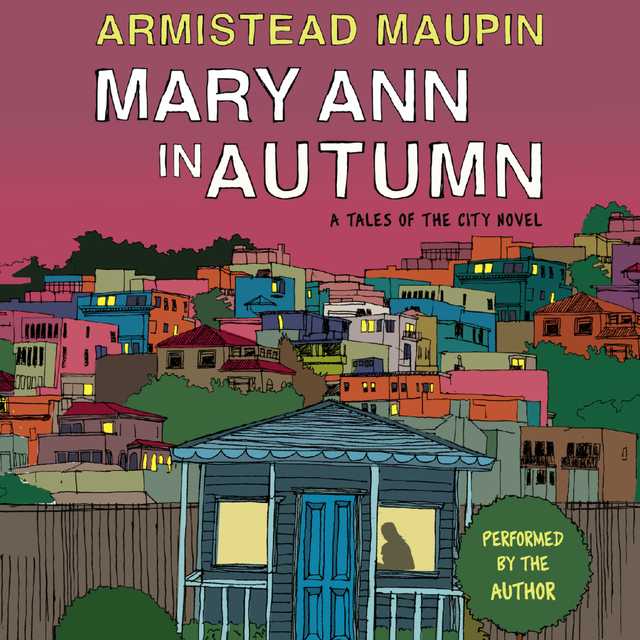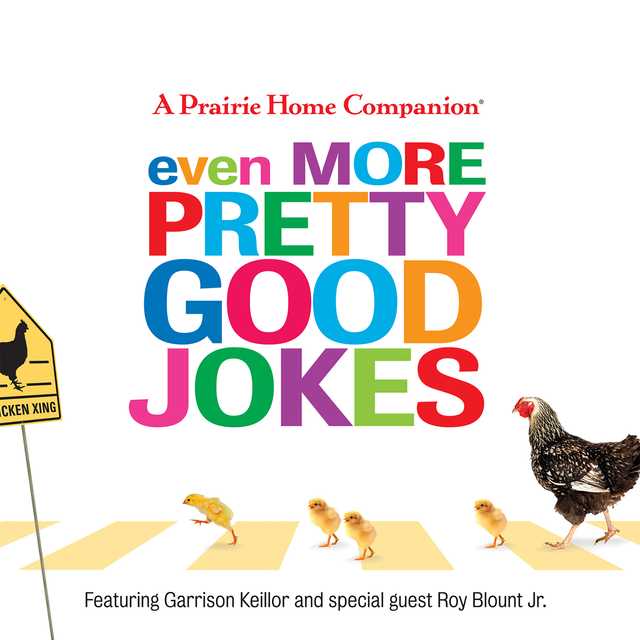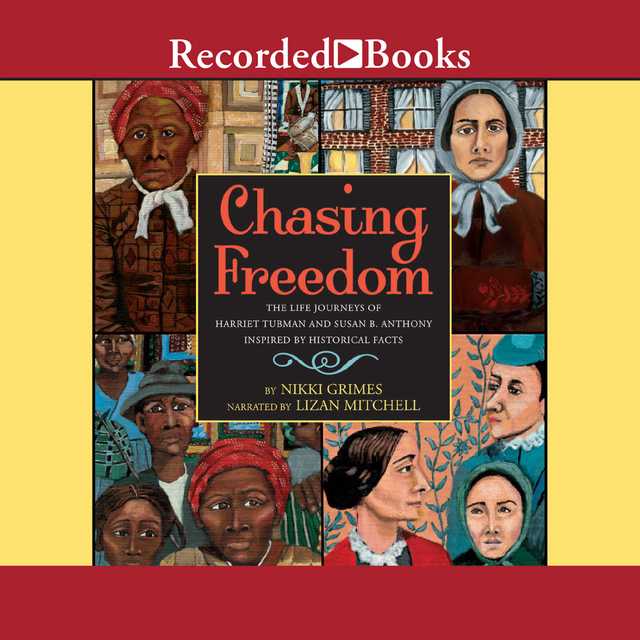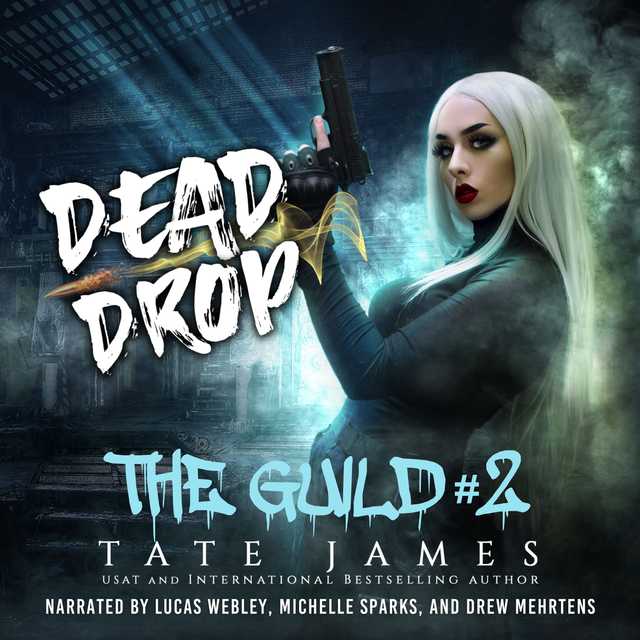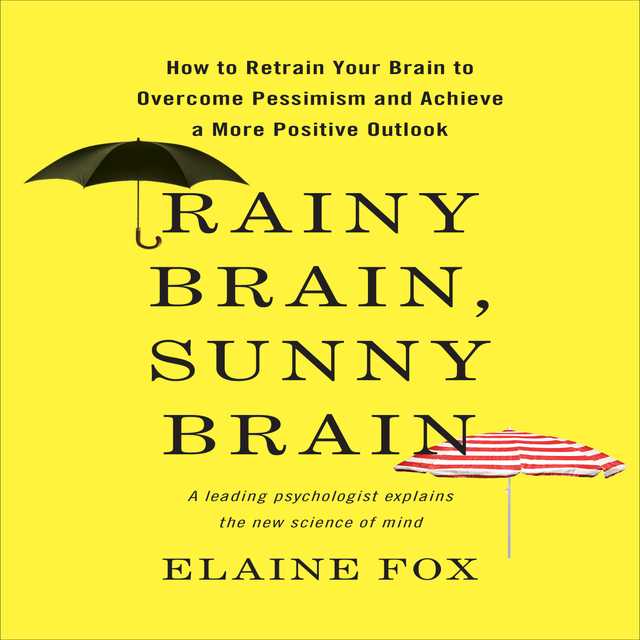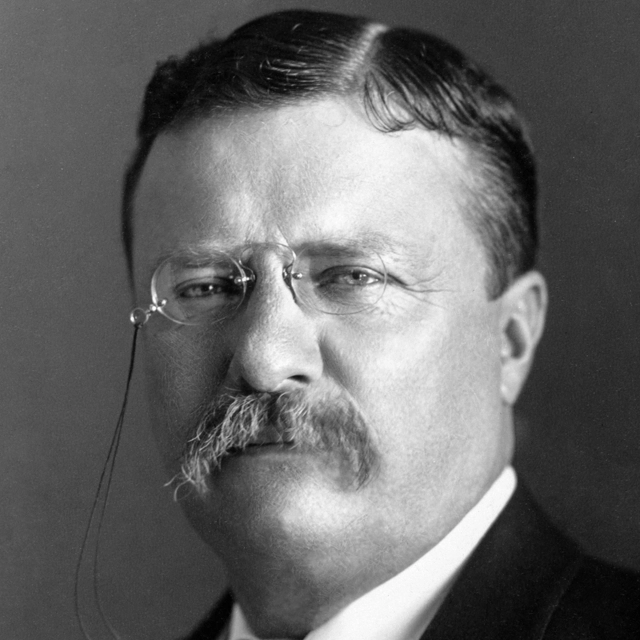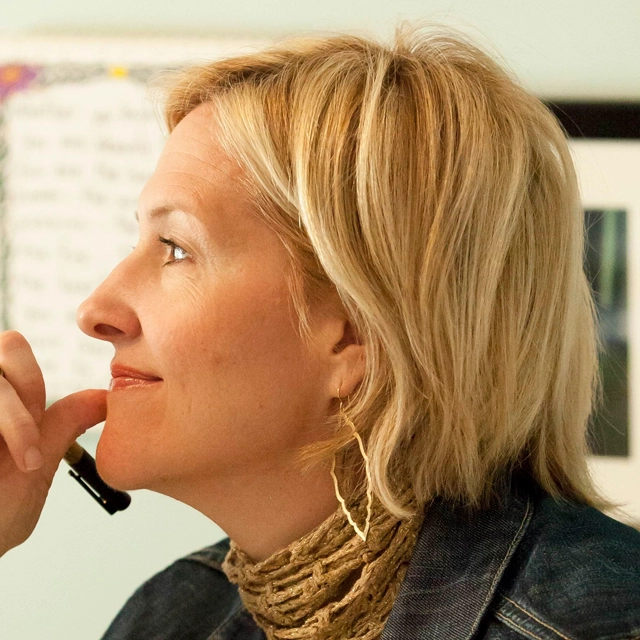Mary Ann in Autumn Audiobook Summary
Inspiration for the Netflix Limited Series, Tales of the City
The eighth novel in the beloved Tales of the City series, Armistead Maupin’s best-selling San Francisco saga.
Following the success of his New York Times bestseller Michael Tolliver Lives, Armistead Maupin’s Mary Ann in Autumn is a touching portrait of friendship, family, and fresh starts, as the City by the Bay welcomes back Mary Ann Singleton, the beloved Tales of the City heroine who started it all. A new chapter begins in the lives of both Mary Ann and Michael “Mouse” Tolliver when she returns to San Francisco to rejoin her oldest friend after years in New York City… the reunion that fans of Maupin’s beloved Tales of the City series have been awaiting for years.
Other Top Audiobooks
Mary Ann in Autumn Audiobook Narrator
Armistead Maupin is the narrator of Mary Ann in Autumn audiobook that was written by Armistead Maupin
Armistead Maupin is the author of the nine-volume Tales of the City series, which includes Tales of the City, More Tales of the City, Further Tales of the City, Babycakes, Significant Others, Sure of You, Michael Tolliver Lives, Mary Ann in Autumn, and now The Days of Anna Madrigal. Maupin's other novels include Maybe the Moon and The Night Listener. Maupin was the 2012 recipient of the Lambda Literary Foundation's Pioneer Award. He lives in San Francisco with his husband, the photographer Christopher Turner.
About the Author(s) of Mary Ann in Autumn
Armistead Maupin is the author of Mary Ann in Autumn
More From the Same
- Author : Armistead Maupin
- Tales of the City
- Significant Others
- Babycakes
- The Days of Anna Madrigal
- MAYBE THE MOON
- Publisher : HarperAudio
- Abraham
- American Gods [TV Tie-In]
- Dead Ringer
- House of Sand and Fog
- Prey
Mary Ann in Autumn Full Details
| Narrator | Armistead Maupin |
| Length | 7 hours 51 minutes |
| Author | Armistead Maupin |
| Publisher | HarperAudio |
| Release date | November 02, 2010 |
| ISBN | 9780062007131 |
Additional info
The publisher of the Mary Ann in Autumn is HarperAudio. The imprint is HarperAudio. It is supplied by HarperAudio. The ISBN-13 is 9780062007131.
Global Availability
This book is only available in the United States.
Goodreads Reviews
Neil
October 24, 2010
A beautiful conclusion to the series. (I assume it's the conclusion, only because it also concludes a dangling plotline from the first book.) The complete Tales of the City cycle is an astonishing one, good-humoured, great-hearted, and written with wit and humanity. Maupin makes you turn the pages because you care about the characters and you want to spend time with them, which may be the best way there is.
Fabian
January 03, 2019
Is "autumn" simply code for... a hysterectomy?! Well, even if it's not, the beloved characters in Armistead Maupin's ol' San Fran are all getting pretty long in the tooth. On our last foray into the Tales of the City, Michael Tolliver gave us a 1st person account of his goings on. Very vanilla, very tepid. In this one, Maupin returns to the various narrative strand structure, and we all sigh one huge collective sigh of relief! It's back to the endearing interconnectedness of characters, the happy returns to previous installments & the rambunctious, gay times! Instead of putting them in graves, like he's known to do, he has tried to capture his characters in their later years, taking nothing away from their original patina of fabulousness. It's pretty hard to stop reading these. (Obviously.)
Alex
March 03, 2011
Michael Tolliver lives! … Again! A three year gap is significantly less than eighteen years. On top of that, this is the first Tales of the City book that I have read contemporaneously. Do you have any idea how strange it is to shift from Maupin speaking to people who predate me to him speaking directly to me, the world in which I’m living? It’s a stretch.I think that Tales of the City books work best as capsules of their time, which of course means, except for Sure of You, they improve with age. That Maupin now speaks of Twitter and Facebook with varying degrees of understanding feels strange to me. Did readers thirty years ago think that D’orothea and DeDe’s involvement with Jonestown was simply bizarre (well, it was by default, but … more bizarre?)?All this is not to say that Mary Ann in Autumn is a bad book or disappointing. For me, at least, it is essential for its service in returning Mary Ann to her figuratively ancestral home. I don’t think I’m exaggerating when I tell you how badly betrayed I felt by her in Sure of You. Mary Ann is not absolved of her sins, but it seems she may well be redeemed.Mary Ann comes to San Francisco seeking cancer treatment and escape from her (Republican) husband. She further reconnects with Michael, and … kind of ignores everyone else. Her estranged daughter Shawna becomes fascianted by a homeless woman, and nothing else specific happens but, in a return to classic Tales form, the threads of coincidence ridiculously intertwine into a somewhat cohesive whole.Mary Ann in Autumn is deliberately more sprawling than Michael Tolliver Lives and consequently significantly less personal. It would perhaps be indulgent for Maupin to start producing first person novels for each of the major characters he has introduced along the way, but it would have been nice to get a feeling for Mary Ann’s inner self. In fact, I think that may have made an overall more satisfying work here, but it would also have meant sacrificing the plot threads. Would they have been sorely missed? On reflection, definitely, but they are not without their own flaws.Shawna frequently doesn’t quite seem like a real character, but rather more of a construct to represent what Maupin considers the “zeitgeist” (having subconsciously realised that he has written her into a corner as a “grrrl”, which must make him cringe deep in his heart of hearts). Her pursuit of Leia is little more than a whim used to power Maupin’s enormous six degrees machine, and she doesn’t come into her own until she’s following up on actual human relationships, both with her estranged mother and her clown boyfriend Otto. There is subtlety and nuance to Shawna, but Maupin wants to bury it underneath her cool facade. He acknowledges this much, and that sparkle of honesty towards the end carries a character that had come dangerously close to caricature over the line.Jake Greenleaf’s own story, though less “common”, seems more topical and relevant in the scheme of the universe, if not the novel. Jake’s story is worthy and carries with it overtones of Mormonism and Proposition 8, which were probably more closely intertwined to the citizens of San Francisco than they were to anyone else. Away from the prism of Michael, Jake is given room to breathe. This isn’t really Michael’s story at all, although he does feature prominently. Giving Jake agency to do things outside the aegis of his boss was a smart move on Maupin’s part and is a valuable part of the novel, but at the same time Jake’s own story has no bearing on Mary Ann’s own through-line. Worthy in its own way, but discardable in the novel’s larger context.So I guess that’s the problem with Maupin as he’s advanced his career: he’s given us knowledge of a different way to consume his work. The irony is that a scant two weeks ago I was complaining that the use of Michael’s voice in Michael Tolliver Lives was uneasy, a pedagogue in search of an audience that he never quite finds. In Mary Ann in Autumn, at least, we don’t have to worry about that. The matter of fact narration leaves no room for worry or questioning.As to Mary Ann herself: it’s good to see her back, and human again. I felt that Maupin had stripped her of humanity twenty years ago and, at the time, I couldn’t forgive a fictional character for compromising herself so severely in pursuit of an ill-informed dream. She has felt her age differently to Michael, in part because she threw away almost twenty years of her life. For Mary Ann, a return to San Francisco is a return to a dreamlike state where only important things matter and nothing hurts. This is different to the escapism that Maupin used to promote, but that was compromised understandably and irrevocably by the intrusion of AIDS into the characters’ milieu. Escapism seems that much more heavy when you have something that you need to escape, and she certainly does. It would be stupid to say that Mary Ann “finds” herself, but she definitely rediscovers what made her likeable in the first place. That Maupin has made me blur the lines between the way that the character is written and the way that the character is tells me that he has done an excellent job over the last 33 years (even if I only read all of the books last year).It’s just a pity that Mary Ann decides to expend so much of her energy on the blue glow of Facebook rather than showing slightly more of herself to the characters and, consequently, the reader. Mary Ann’s representation is definitely not shallow, but it could certainly be somewhat deeper than it has amounted to. The other thing is that Armistead Maupin is now legitimately older himself, if not simply old. This reflects in his cluelessness as to the cluelessness of younger people. The older generation of characters express frequent frustration that the younger don’t understand their cultural points of reference anymore. In Michael Tolliver Lives, Ben didn’t know who Sally Bowles is, which must be some sort of crime, and in Mary Ann in Autumn Jake has no idea who Scarlett O’Hara is, which is definitely a felony. Everyone knows who Betty Page is, for some reason. Maupin writes the younger characters as if he believes that they belong to a new world, and doesn’t consider that they might simply be ignorant.Still, Mary Ann in Autumn is welcome: the prodigal daughter has truly returned after too many years in the wilderness, and she has not been found wanting.
Emma
April 18, 2021
Such a satisfying read! There just aren’t enough books in this series- in fact, Maupin just hasn’t written enough books! This was a perfect revisit of the gang and it was wonderful to see how their lives have played out.
Melody
August 18, 2010
There is almost no way to talk about this without spoilers, so I am going to be as vague as vague can be. But oh, my dear Mr. Maupin, what a lovely present you have given us, all tied up with neat little bows- all of those dangling ends from the original series, so pretty!Where Michael Tolliver Lives was a benediction, a book I couldn't read three pages of without weeping, this is a hearkening back to the bad old days of the Chronicle serial, with odd, unbelievable plot twists that make a person whoop with laughter. A delight, an unmitigated delight.
Paul
November 06, 2010
Barbary Lane Lives OnIt’s a complete coincidence that I ended up in San Francisco just days before Mary Ann in Autumn, Armistead Maupin’s latest installment of the Tales of The City series, was released. The trip was planned well before I ever knew the release date of the novel, but once I learned of the close proximity of the two events, my trip to the Bay Area transformed into a pilgrimage of sorts to Maupin’s endearing and iconic works, Mrs. Madrigal, Michael “Mouse” Tolliver, and all the denizens of the Tales of the City.After walking all the way from Market and Powell, getting lost, and going up and down Russian Hill at the grand old age of 46, I found myself, winded and sweating, standing on the steps of Macondray Lane—the real life inspiration for the house that has been etched into my psyche for so long—hoping to capture a little bit of the magic of that literary world. And it’s only fitting that in the opening chapter of Mary Ann in Autumn, the titular character, Mary Ann Singleton, finds herself climbing those same stairs to catch a glimpse of her former home, 28 Barbary Lane. With a wistfulness and longing, the 57 year-old stares through the locked gate of the property, similarly trying to recapture the magic that had been her past life, one she abandoned so many years ago along with her husband and adoptive daughter.With that scene, Maupin perfectly sets the tone for Mary Ann in Autumn, a sweet and solid entry in the Tales of the City mythos that is part nostalgia (for both the readers and the character of Mary Ann), and a deceptively simple exploration of the desire for one person to discover who they truly are after pursuing who they thought they wanted to be.Mary Ann has returned to San Francisco after some shocking revelations in her personal life, and the first person she contacts is her old friend, Mouse, now happily married to the younger Ben. From the moment Maupin brings the two together, their voices are as if they have never been apart, easily falling into the playful (and sometimes serious) banter that made them an endearing couple of friends in the original works. And here is where the novel succeeds best: the rekindling of that relationship and the literary rehabilitation of Mary Ann.In the original Tales novel and early sequels, Mary Ann Singleton was an immensely likable young woman, a naïve transplant to San Francisco from the bastion of conservatism, Cleveland. Her journey as she discovered who she was and how she reacts to a city as free as 1970s San Francisco was funny, charming, mysterious and a little bit sad. But starting in the 4th book in the series, Babycakes, Mary Ann found herself in search of a career and she became a not-so-likable person, one who seemed willing to turn her back on family and friends. It was disheartening for me as a reader to see Mary Ann transformed such. Now, don’t get me wrong…it was utterly true to life. How many times have we all had someone in our lives who is incredibly dear to us who gets caught up in the desire to be something more and becomes someone we don’t like so much any more? There was nothing at fault in Maupin’s writing of those later three novels. It was spot on. I simply didn’t want to see a dear, wonderful friend become someone I didn’t like. I wanted her to always stay Mary Ann. And that, alone, is a testament to Maupin and the character he created. I never wanted her to change.In Mary Ann in Autumn, though, we find a character who is, again, at a turning point. As she approaches the autumn of her life, she has obviously been taking stock, looking closely at her past choices, the repercussions of some not-so-great actions. In trying to find a way forward, she is looking back at the people she has left behind, one of whom happens to be herself. And she finds that little bit of herself, again. Don’t get me wrong, Maupin doesn’t magically convert Mary Ann back to whom she was. He doesn’t absolve her of her sins. She’s older, wiser, still a bit self-absorbed, but it almost feels as if she is exhaling all the inconsequential crap that has been in her life, so that she can breathe in again. And it is exactly in her relationship to Mouse that Maupin so expertly let’s us like Mary Ann again, perhaps understand her a bit more. Maupin also adds in outsiders, those who never knew the Mary Ann we all loved, to help in this rehabilitation, namely Mouse’s husband, Ben who is a bit suspicious of this woman and her effect on Michael. Through him—someone without the shared history—we get to learn this new Mary Ann. As Mouse himself says to Ben “Look, I know you think she’s a drama queen, but she’s had some actual drama.”Now, in any Tales novel, a reader expects some humor, a little bit of mystery and wonderful characters. Maupin is in excellent form here, capturing everything we readers have loved about Tales, but never once relying on our nostalgia for the series. His 2010 San Francisco is just as vibrant and alive as his San Francisco of the 70s and 80s. It has simply grown and changed, morphed into something different, no less charming or infections as its previous incarnation. In the mystery department, Maupin gives us Shawna, Mary Ann’s estranged, adoptive daughter, now a popular sex-blogger looking for a new direction in her life. She fixates on an old homeless woman named Leia, and stumbles onto a mystery that she must solve, a mystery that gives us readers a genuine aha! moment or two that is richly satisfying. But that’s not all…Facebook figures into it all as well, giving us yet another jolt that can’t be revealed in a review. Now I tend to pride myself on figuring out twists and turns, but Maupin honestly got me on these. I didn’t have it figured out until it was very clear that Maupin wanted me to. Perhaps I was just naive, but I was genuinely taken by surprise by the twists.In the character department, Mrs. Madrigal is still with us and although her role is somewhat limited, she’s just as pithy as always, each of her “dears” just warming my heart, and her spirit is richly pepered throughout the novel. DeDe Halcyon makes an appearance, as does D’or. And Maupin augments the Barbary Lane family with Jake Greenleaf, an immensely appealing trans-man, Michael’s Ben, and Shawna’s adorable and patient boyfriend Otto. These are all welcome additions to the family, feeling as natural as the characters we’ve all known for year.Now, I have read a few reviews that mention the conspicuous absence of Brian Hawkins (Mary Ann’s ex-husband and father of Shawna) and those who have read Michael Tolliver Lives know that the beloved Mona is no longer with us. But I never felt their absence in this novel because Maupin has expertly woven their spirits into the work. Mona is there…a large part of her spirit embodied in Shawna…and Brian is present as well, aspects of his personality richly resonant in two of the new characters. One might even spot a younger version of Mouse or, perhaps, a successor to Mrs. Madrigal.In the end, Mary Ann in Autumn is still a love-letter to San Francisco. It’s still a wonderfully magical series that, I think, Maupin has reinvented for the new millennium. He shows us that you can indeed go home again, though that home will have changed and grown just as we have. Most importantly, he shows us that while 28 Barbary Lane may have become a single-family dwelling, its spirit is still strong. Because 28 Barbary Lane isn’t so much a time or a place, some clapboard building at the top of a set of rickety stairs…28 Barbary Lane is our “logical family,” the family we’ve created and carry with us always, no matter where we may be. Highly recommended.
Ed
January 22, 2015
I have such affection and nostalgia for the Tales of the City books and the subsequent mini-series so much so that when I was in NYC this fall, it was a no-brainer that I would see Laura Linney in a play just to see "Mary Ann" in-person. So when I opened the book (well, okay clicked onto the screen) and saw that Armistead Maupin had dedicated this volume to Linney, he pretty was going to have to do something abominable to make me not love this book. The book quickly took me back into the lives of these characters and their beloved city of San Francisco, it was like meeting up with old friends and not missing a beat.Alas, we have all aged since the original books and while the characters are a wee bit older than myself, there was still a lot that I could personally relate to and there are a sprinkling of new characters to keep it fresh, though some(Michael's biz partner Jake and non-biz partner Ben) were first introduced in Maupin's first dip back into the Tales waters in Michael Tolliver Lives.While he provides helpful reminders of the characters' histories, I can't imagine anyone jumping into this book and knowing what the heck is going on or getting any of it, particularly Maupin's penchant for happenstance/serendipity in connecting up everything some some way, some how. I am sure even some fans may feel like Maupin should have quit while he was ahead, but for me as long as he wants to write about these characters, I'll be reading.
Laurel-Rain
December 13, 2010
Mary Ann Singleton is back in San Francisco (from Connecticut) after two personal calamities have knocked her off course. She had fled the city twenty years before, to escape a bad marriage; she left her adopted daughter behind as well.Now she is staying with two old friends, Michael Tolliver and his partner Ben, hoping to sort out the mess of her life in the nurturing comfort provided by friendship.The story reveals an intriguing cast of characters that includes Michael and his business partner Jake, who is undergoing transgender surgeries, officially changing from female to male. Then there is Ben, who spends time every day in the dog park, where he meets unusual people, including a man named Cliff. And finally, there is also Anna Madrigal, who is an elderly woman who has been like a touchstone for these friends, both in the past and in the present.Meanwhile, Shawna, the girl “left behind” by Mary Ann all those years ago, is focused on her popular sex blog, much to the occasional annoyance of her boyfriend Otto. While traversing the city, Shawna connects with a homeless woman to whom she feels strangely connected.At Michael and Ben’s garden cottage, Mary Ann has discovered Facebook and in the process of accepting friend requests, she is “stalked” by a curiously disturbing person called Fogbound One.Since "Mary Ann in Autumn: A Tales of the City Novel" is part of a series called Tales of the City, all of these characters have a history chronicled in previous tomes; this one felt like a brief glimpse of a life at a particular moment in time, but with several threads from the past finally coming together in the end.Surprisingly, the connections mesh quickly in this rather short book of 287 pages, but even with just this brief look into the lives of these characters, I felt as though I had come to know them. Now I want to read the other books in the series. Five stars.
Steven
November 19, 2015
"Mary Ann in Autumn" is the penultimate book in the nine-volume "Tales of the City" series, and it demonstrates how much Armistead Maupin has grown as a writer over a thirty-year period. "Tales of the City," the first book, was a jokey, rather thin narrative, but Maupin has learned how to write a book that has a lot more meat on its bones. The style of "Mary Ann in Autumn" is maturely seriocomic, the characterization is deft and economical, and the emotional climaxes are carefully prepared and delivered. It startled me to realize that I am exactly the same age as Mary Ann Singleton and her longtime gay friend, Michael Tolliver, so accompanying these two on their journey from book to book (and I have read all of them in a short space of time) is like revisiting key milestones in my life: the hedonistic 70s, the frightening advent of HIV/AIDS in the early 1980s, the hallucinatory Reagan years, the go-go 1990s, post-9/11 anxiety, and finally confronting what it means to enter late middle age (or "young old age"). It's been a dizzying trip, and now I'm on the brink of saying goodbye to these much loved people and their milieu in the last book, "Anna Madrigal Lives." I'm feeling wistful and rather melancholy as I approach the end of this wonderful series of books. Thanks, Armistead Maupin, for a great ride.
Emilia
December 08, 2010
Ugh. It is like coming home, and I hate hate hate hate hate when it is over. This book was not as emotionally wrenching, to my memory, as Michael Tolliver Lives, and that was a-ok. But, as my daddy put it the "gothic" element really came back and rushed in and was wonderful and I was reading it in a bathtub in a lonely creaky house and it was a little terrifying.This book make me laugh out loud, catch my breath, and squeal every few pages without being painful, existential or anything but, well, fun.The Jake storyline is going to stick with me -- essentially, yes, we are yearning for a strong masculine presence to hold us, but who really says what that presence has to look like? Anna Madrigal is an angel, for reals, and we're all blessed to know her. I'm glad for Mary Ann's basic redemption, and I tend to wish I lived in this easy-yet-complicated world until the gothic strikes!Finally, made me reflect on the time-bound nature of the story -- and how very "of it's time" in a time capsule way TOC was in the olden days, and how it's odd, yet fitting, that it's doing the same thing for Facebook and Blogs and Dog Parks today that it was doing for joints and grocery store cruising in the 70s. Geez. I mean, I feel old!Thanks Monsieur Maupin. Thanks a buttload.
Michael
November 20, 2011
Why is it that I always feel a little sad when I finish reading a Maupin book? Maupin reminds me very much of Dickens. He has these wonderful intricate, episodic plots that make you want to keep racing ahead. But it is his characters more than anything that make Maupin's books so wonderful. Maupin, like Dickens, has the rare talent for creating these wonderful characters who are all too human with their secret flaws and fears they are afraid to reveal. And if you've read all of the Tales of the City books, you come to know some of the characters in a very intimate way, and you end up falling in love with them often because of--not in spite of--their flaws. But the flaws are gradually outed, but to kindly and sympathetically received by those around them--often to the wise Mrs. Madrigal. I once heard the quote "A good book reveals us to ourselves." I don't know who said that, sorry. But I think that through Maupin's characters, we see ourselves--flaws and all. But they get the kind of resolution we wish we had in our lives. Maybe that's why I's sad when I'm done reading a Maupin book.
Shannon
July 12, 2013
I don't remember being particularly impressed with Tolliver's other new Tales book, Michael Tolliver Lives, but Mary Ann in Autumn was much better.On the one hand, I'd not particularly thrilled to be reading these books about young characters that I enjoyed now moving into (and beyond) middle age. I'd prefer to remember them as forever young in a way that only fictional characters can be. Despite that, I can't help myself from reading the newest.And Mary Ann in Autumn was worth it. It returns not just to the characters of Maupin's older stories, but also to the type of stories that Maupin was writing when the series was at its best, in its first few volumes. There's mystery here, very nicely setup and executed that goes hand-in-hand with the deeper character moments that exist throughout. There's also some really nice continuity.By the time it was done, the plot had become one of my favorites of the series, and one that was very deftly written in a way that Maupin might not have been able to back when he was serializing these stories.
Frequently asked questions
Listening to audiobooks not only easy, it is also very convenient. You can listen to audiobooks on almost every device. From your laptop to your smart phone or even a smart speaker like Apple HomePod or even Alexa. Here’s how you can get started listening to audiobooks.
- 1. Download your favorite audiobook app such as Speechify.
- 2. Sign up for an account.
- 3. Browse the library for the best audiobooks and select the first one for free
- 4. Download the audiobook file to your device
- 5. Open the Speechify audiobook app and select the audiobook you want to listen to.
- 6. Adjust the playback speed and other settings to your preference.
- 7. Press play and enjoy!
While you can listen to the bestsellers on almost any device, and preferences may vary, generally smart phones are offer the most convenience factor. You could be working out, grocery shopping, or even watching your dog in the dog park on a Saturday morning.
However, most audiobook apps work across multiple devices so you can pick up that riveting new Stephen King book you started at the dog park, back on your laptop when you get back home.
Speechify is one of the best apps for audiobooks. The pricing structure is the most competitive in the market and the app is easy to use. It features the best sellers and award winning authors. Listen to your favorite books or discover new ones and listen to real voice actors read to you. Getting started is easy, the first book is free.
Research showcasing the brain health benefits of reading on a regular basis is wide-ranging and undeniable. However, research comparing the benefits of reading vs listening is much more sparse. According to professor of psychology and author Dr. Kristen Willeumier, though, there is good reason to believe that the reading experience provided by audiobooks offers many of the same brain benefits as reading a physical book.
Audiobooks are recordings of books that are read aloud by a professional voice actor. The recordings are typically available for purchase and download in digital formats such as MP3, WMA, or AAC. They can also be streamed from online services like Speechify, Audible, AppleBooks, or Spotify.
You simply download the app onto your smart phone, create your account, and in Speechify, you can choose your first book, from our vast library of best-sellers and classics, to read for free.
Audiobooks, like real books can add up over time. Here’s where you can listen to audiobooks for free. Speechify let’s you read your first best seller for free. Apart from that, we have a vast selection of free audiobooks that you can enjoy. Get the same rich experience no matter if the book was free or not.
It depends. Yes, there are free audiobooks and paid audiobooks. Speechify offers a blend of both!
It varies. The easiest way depends on a few things. The app and service you use, which device, and platform. Speechify is the easiest way to listen to audiobooks. Downloading the app is quick. It is not a large app and does not eat up space on your iPhone or Android device.
Listening to audiobooks on your smart phone, with Speechify, is the easiest way to listen to audiobooks.

